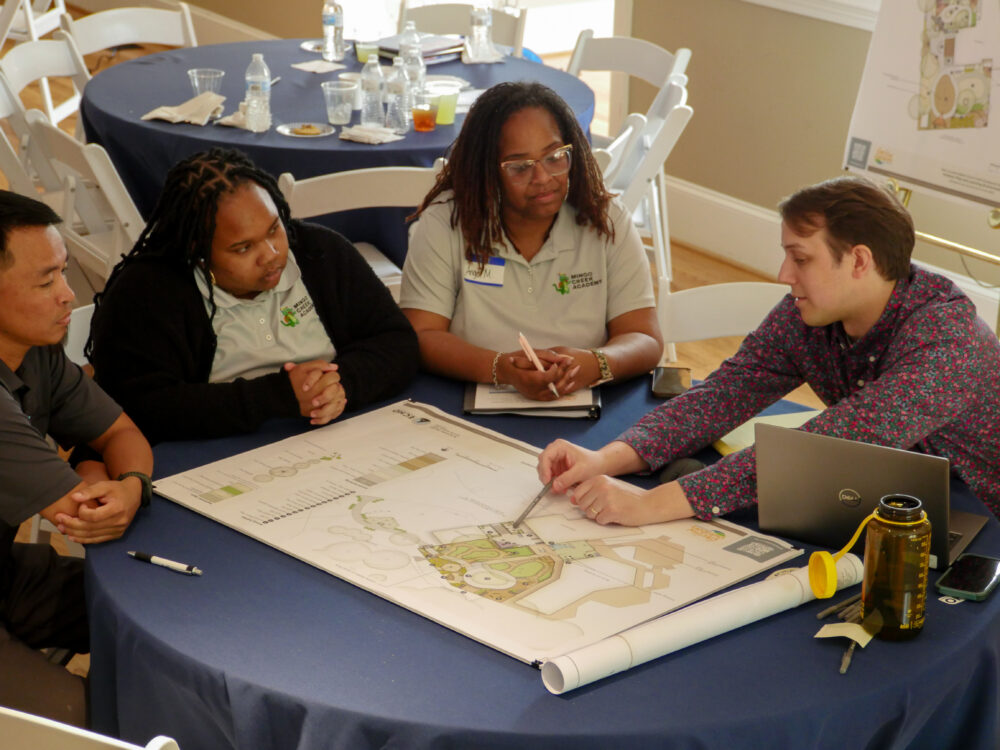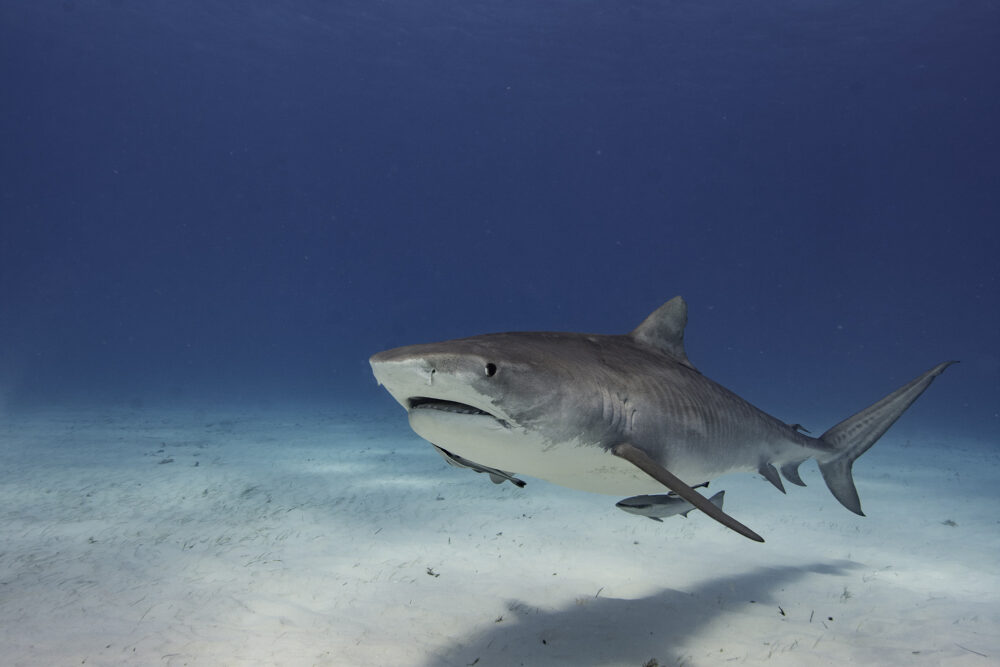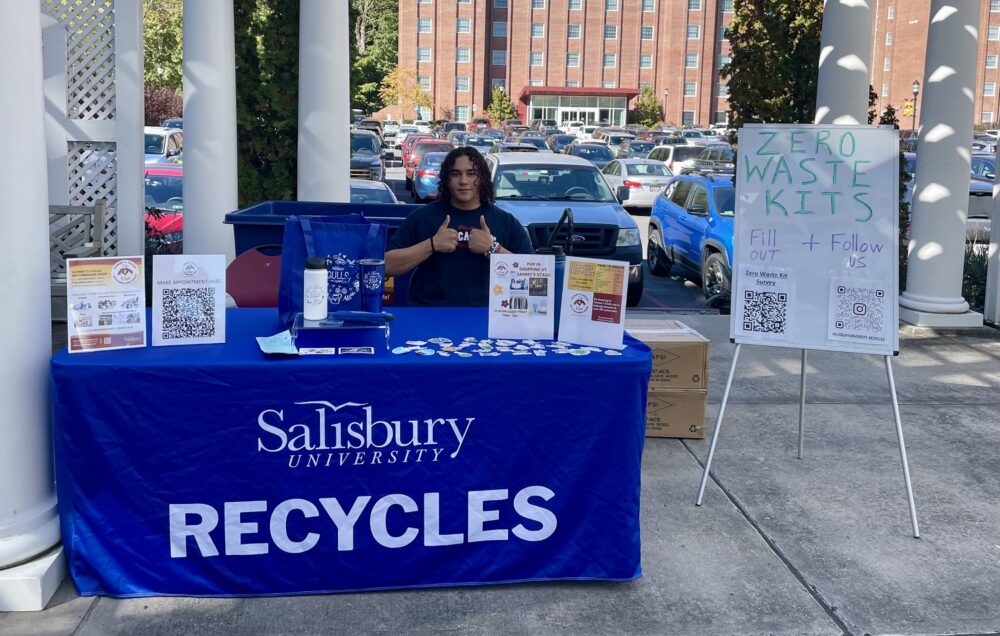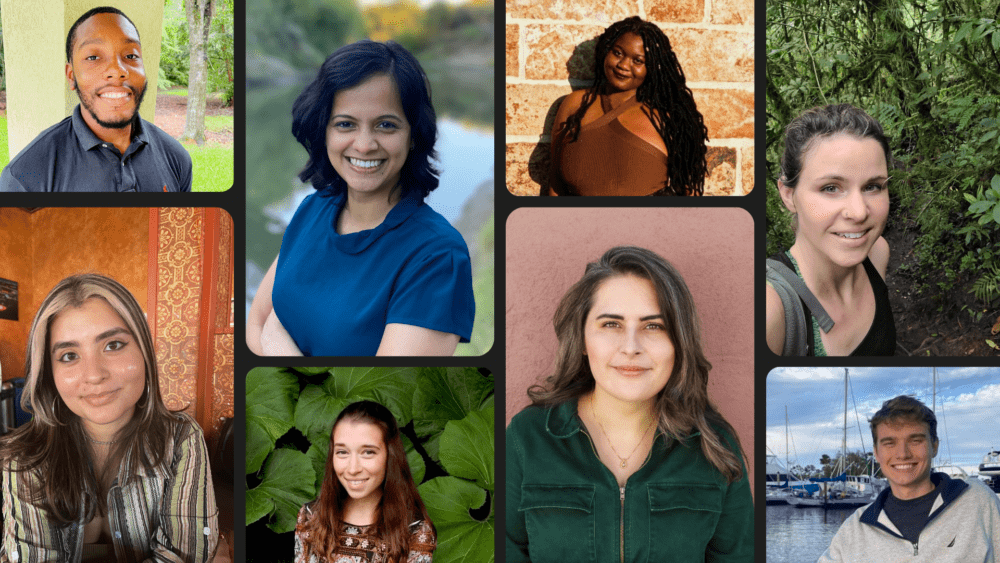We have much more to do and your continued support is needed now more than ever.
The Egg Comes First in this Eco-School
Interview with Eastside Memorial High School, first Green Flag High School in Texas
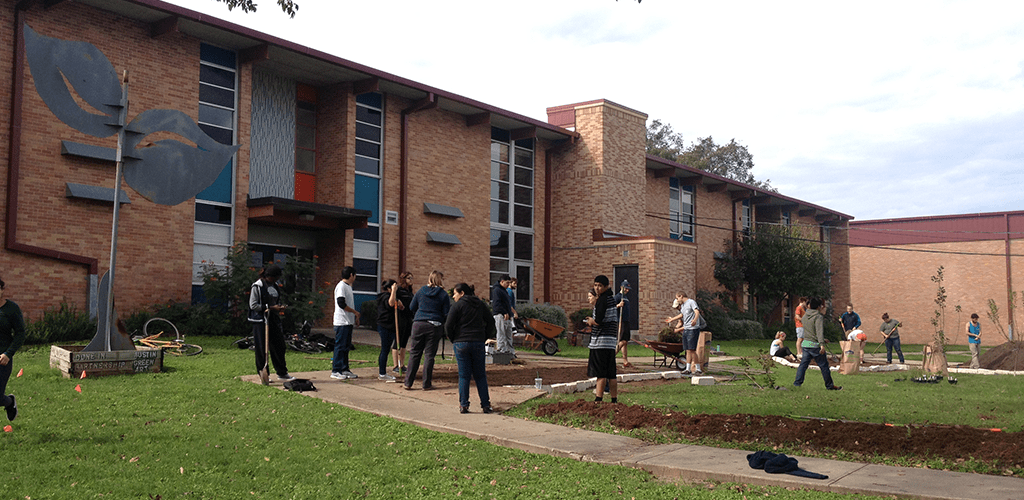
Amanda Mortl, lead Eco-Schools teacher at Eastside Memorial High School, our first Green Flag High School in Texas, answers a few questions about her school’s journey to sustainability.
Why did you choose to become an Eco-School?
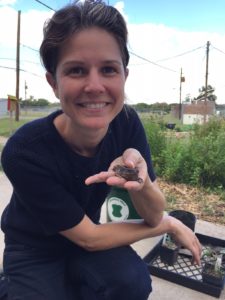
What happens first, the chicken or the egg? In the case of Eastside Memorial High School (Eastside), it all started with the eggs! Keep Austin Beautiful staff hosted an after school club at Eastside called Green Teens, and they offered the school a dozen fertile eggs to incubate and hatch.
As a teacher, chicken enthusiast, and the after school club co-sponsor, I was thrilled with the idea of raising chickens and started to organize a workday to build the future chickens a coop. Eastside had won their first environmental grant a few months earlier, and had already been planning on developing food production on campus through gardens. So in December 2014, Eastside hosted a campus beautification workday. Students, staff and community members built a chicken coop, native flower beds and planted fruit trees that Eastside’s Environmental Science students would maintain. This workday was so successful and popular that it led to more workdays, and then they became monthly. These workdays were the seed that flourished into a bigger movement at Eastside.
As Eastside’s Environmental Science teacher, I was looking for project-based environmental leadership opportunities for my students. As I was researching, I realized that no high school in Texas had yet been certified as a National Wildlife Federation Green Flag Eco-School. I thought that this would be a worthy and motivating challenge for our students, and they certainly rose to the occasion! After a year of intense projects, Eastside Memorial became the first Green Flag high school in Texas.
What challenges did your school face?
This answer requires some background information: The Environmental Science students were the leaders in the Green Flag endeavor, and they were divided into four eco-teams: Zero Waste, Energy, Habitat, and Communications. The class conducted an environmental audit for each pathway, and the teams identified ways to make improvements at our school based on the results of each pathway audit.
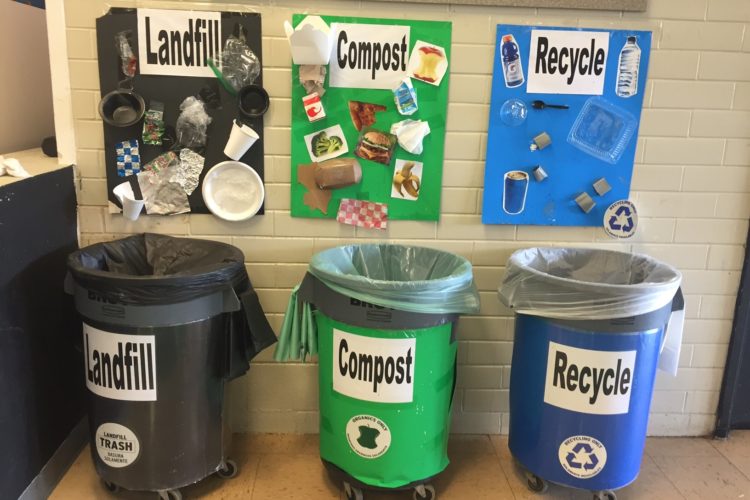
The Zero Waste team made sure we had zero-waste display cases that were accessible to speakers of any language since we have a such a diverse population here at Eastside. Our campus hosts two schools in one building: Eastside Memorial and International High School, which is composed of newcomer students that are learning English. To reach out, Eastside students made bilingual presentations for them on how to recycle in the classrooms, and stood by our waste containers during lunch to enforce recycling practices and introduce our new compost system. They also supported the custodial staff by collecting recycling and compost from classrooms.
Our Habitat team researched the types of plants that would attract pollinators, advocated to bring a bee hive to campus, and bought a tub to create a small pond. We built four pollinator garden beds last year during our Keep Eastside Beautiful workdays. Students in the Humanities classes helped maintain our permaculture garden and students in the Health Science elective helped maintain our food garden.
Our Communications team was supported by our graphic design and art students, who helped determine our eco-logo. These students created eco-logo design ideas, which were voted on by the entire school. The winning logo reflects the impetus of our environmental progress: it’s an adorable chicken with our mascot’s paw print for a feather design. The communication team also maintained our social media, and created our Keep Eastside Beautiful webpage.
Finally, our Energy team adopted teachers to remind them to turn off their lights, unplug their electronics, carpool, and bike to school. In the first semester, the Energy team surveyed every teacher on their electricity and energy use. The data was stored in Excel spreadsheets and it took a lot of time to create and maintain the data. The data was stored in a shared drive, and was hacked and encrypted not once, but twice! We ended up having to scale back our energy goals to only using data from 10 teachers instead of the whole school, so that we could move forward regardless of another encryption. This year, we hope to work with the City of Austin to identify ways our building envelope can be improved to save energy.
How does your school’s project(s) benefit wildlife either indirectly or directly?
On our school grounds, we have over ¾ acre of native and adapted wildlife habitat with an emphasis on supporting native pollinators. We’ve added native bee houses, bird houses, and have built bat houses. We have a flower bed specifically for hummingbirds, one for butterflies, one for native bees, and are building four gardens specifically for monarchs! These areas used to be part of an open, mowed grass field with no habitat value. Now that we’ve added a variety of native plants, healthy soil and mulch, we’ve seen a whole new food web show up. For example, we’ve never before seen Gulf Coast toads in this area, but now we have enough moisture in the gardens to provide hiding spaces for them.
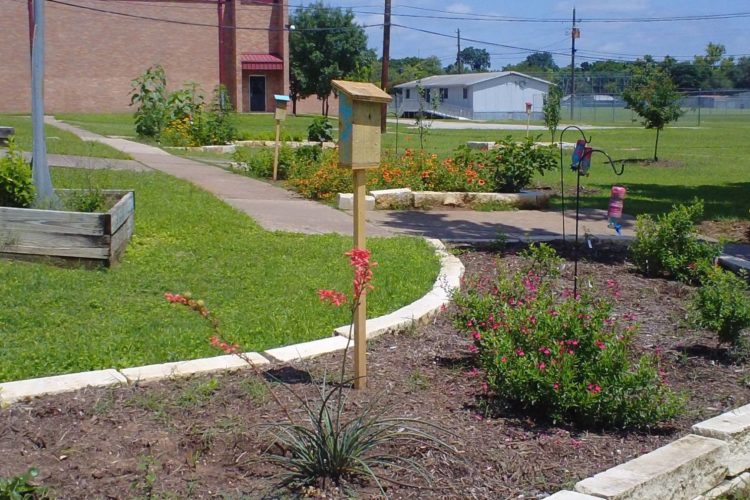
I’m also hearing more students say they want to study environmental science in college — I’m not sure they knew of it as an option before! So you could say we’re improving the environment at Eastside, but I’d also like to think the work we do will spread awareness in our students’ lives such that they are inspired to be stewards in new locations once they graduate.
What’s next on your agenda?
We will continue monitoring our progress in the three Eco-Schools pathways (Consumption & Waste, Energy, and Schoolyard Habitats), and add the Biodiversity pathway during our addition of 200 square feet of monarch habitat through the National Wildlife Federation’s local Monarch Heroes program.
Join Eco-SchoolsRegister your school as an Eco-School for free














